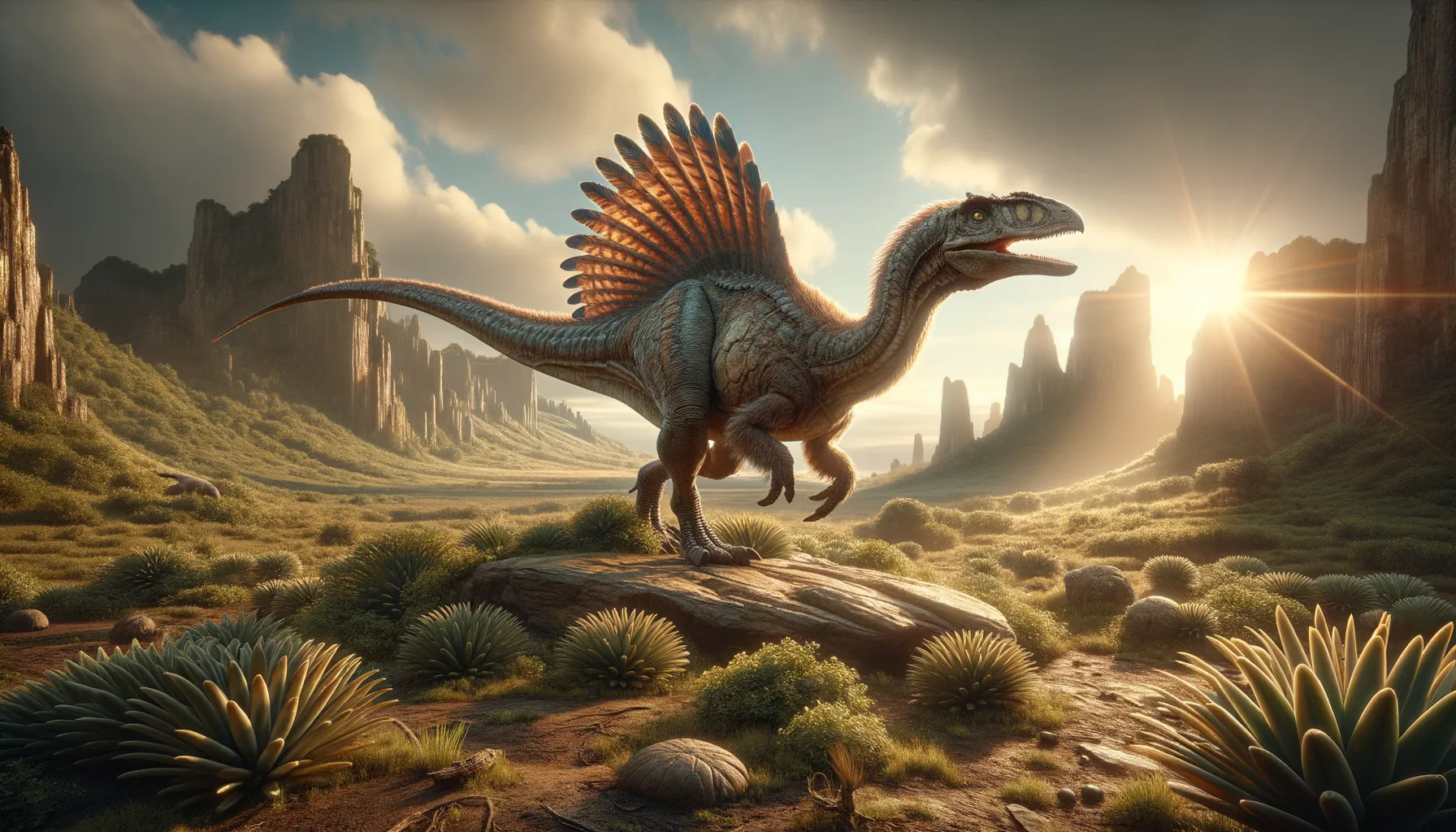
Nomingia
A feathered friend from the ancient past!
Period
Cretaceous
Length
About 1.7 meters long.
Height
Roughly 1 meter tall.
Weight
Around 20 kilograms.
Nomingia was a bird-like dinosaur that lived during the late Cretaceous period in what is now Mongolia. It is noted for a unique feature—a pygostyle, resembling that of modern birds, suggesting it had a fan of feathers at the end of its tail. This discovery has enriched our understanding of the evolutionary link between theropod dinosaurs and birds.
Diet
Nomingia was an omnivore. It likely consumed a variety of plants, insects, and small animals. This varied diet helped it to thrive in different environments.
Hunting
Being relatively small, it may have foraged for food rather than hunted. Its ability to eat a wide range of foods would have been advantageous in survival. It may have used its agility to catch insects or small prey.
Environmental challenges
Its environment posed threats like predators and climate variations. Nomingia had to adapt to avoid larger carnivorous dinosaurs. Changes in vegetation during its time would require it to exploit various food sources. Periods of drought or cold would have tested its ability to find sustenance.
Speed
It could move at a moderate pace.
Lifespan
Approximately 20 to 30 years.
First discovery
Discovered in Mongolia in 2002.
Fun Facts
- Nomingia was a theropod dinosaur, which means it walked on two legs and was likely a carnivore.
- It lived during the Late Cretaceous period, around 70 million years ago.
- Nomingia was discovered in Mongolia, and its name reflects the area where it was found.
- This dinosaur is known for having a bird-like tail with a fan shape, suggesting it might have been an early relative of modern birds.
- Unlike many other dinosaurs, Nomingia wasn't very large, growing up to about 2 meters long.
- The discovery of Nomingia helped scientists understand more about the evolution of feathers and tails in dinosaurs.
- Nomingia's fossils were first described by scientists in the year 2000.
Growth and Development
Nomingia likely hatched from eggs, with juveniles displaying rapid growth. Juveniles might have required parental care initially. As they grew, their physical characteristics such as a fully developed pygostyle and feathers emerged. Growth rates would have varied depending on environmental conditions.
Habitat
Nomingia inhabited the semi-arid regions of what is now Mongolia. It lived among floodplains, with a mix of plant species to support its diet. Seasonal changes would have influenced vegetation and water availability. This dynamic environment would have shaped its lifestyle and survival strategies.
Interaction with other species
Coexisted with various other dinosaur species. Predators like Tyrannosaurs posed constant threats. Herbivorous contemporaries might have competed for food. Its social behaviour could involve complex interactions with species sharing its habitat.
Natural lifespan
It naturally lived to about 20-30 years.
Reproduction
Reproduced by laying eggs, possibly in nests. Parental care might have played a role in juvenile survival. Mating rituals would likely involve displays among males. Egg incubation would be vital in the continuation of its lineage.
Social behaviour
Nomingia may have exhibited flocking behaviour for protection. Communication among individuals via visual or vocal cues could have been present. It possibly shared habitats with similar species, promoting mixed-species group interactions. Such social structures helped in deterring predators and enhancing survival.
Fossil locations
Fossils primarily found in Mongolia. Unearthed during expeditions in the Gobi Desert. Specific sites provide important insights into its ecology and living conditions. Discoveries have contributed to understanding dinosaur evolution in Asia.
